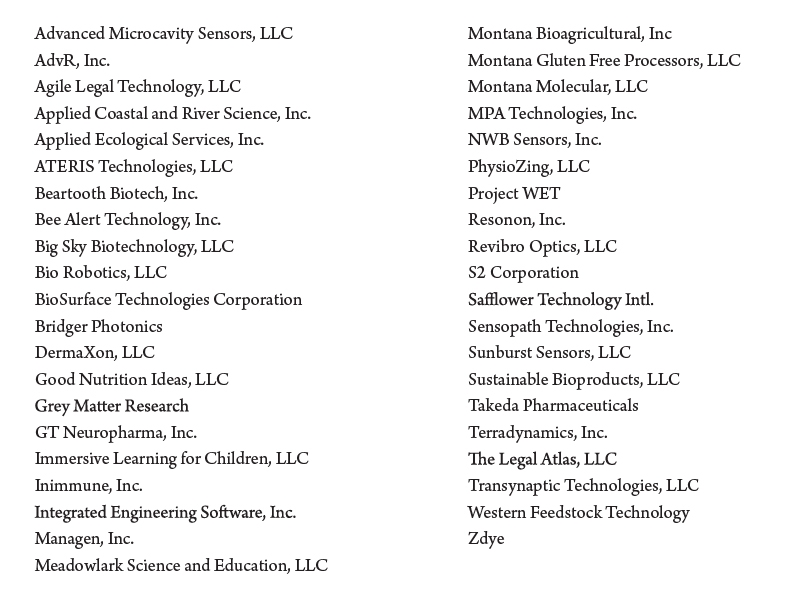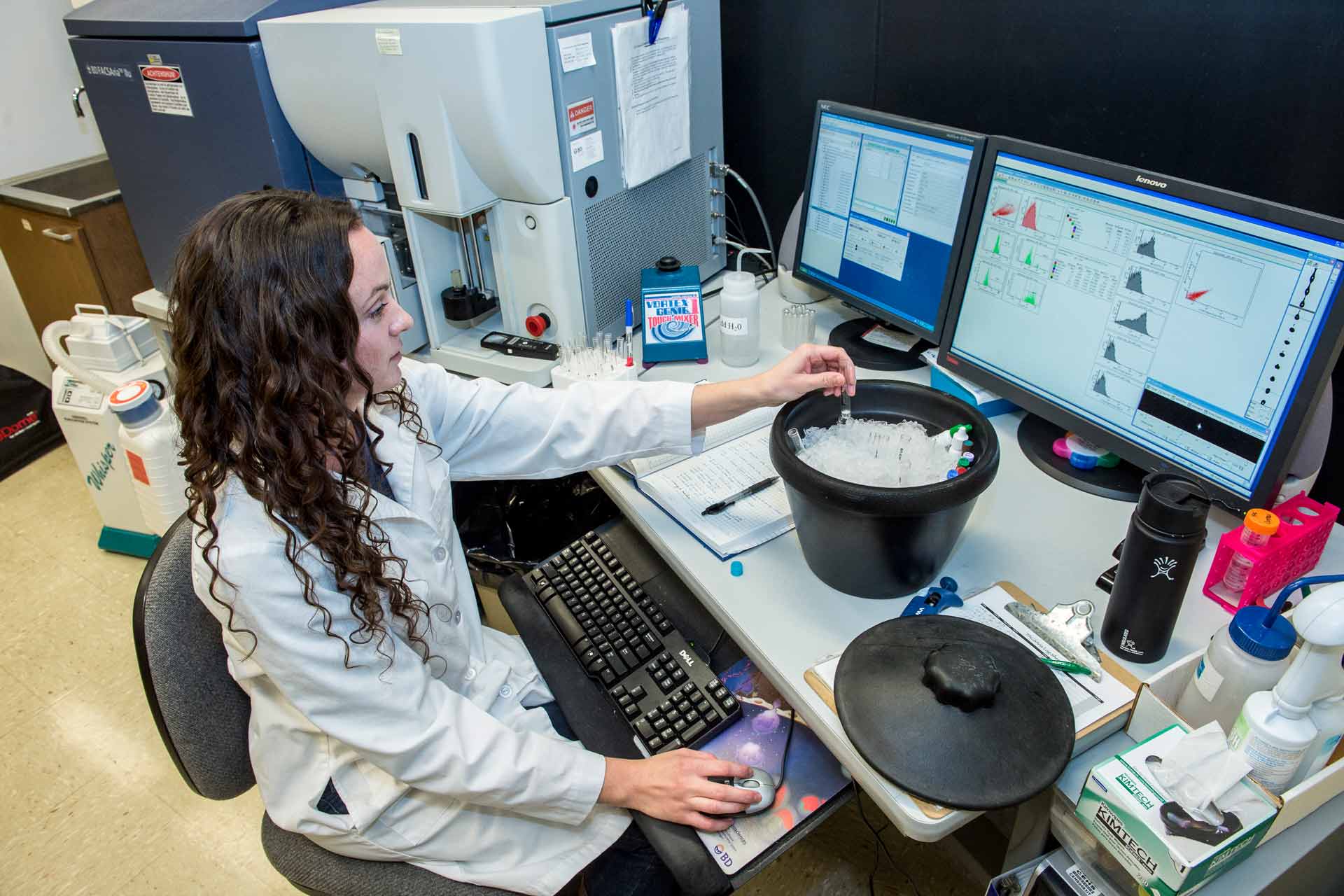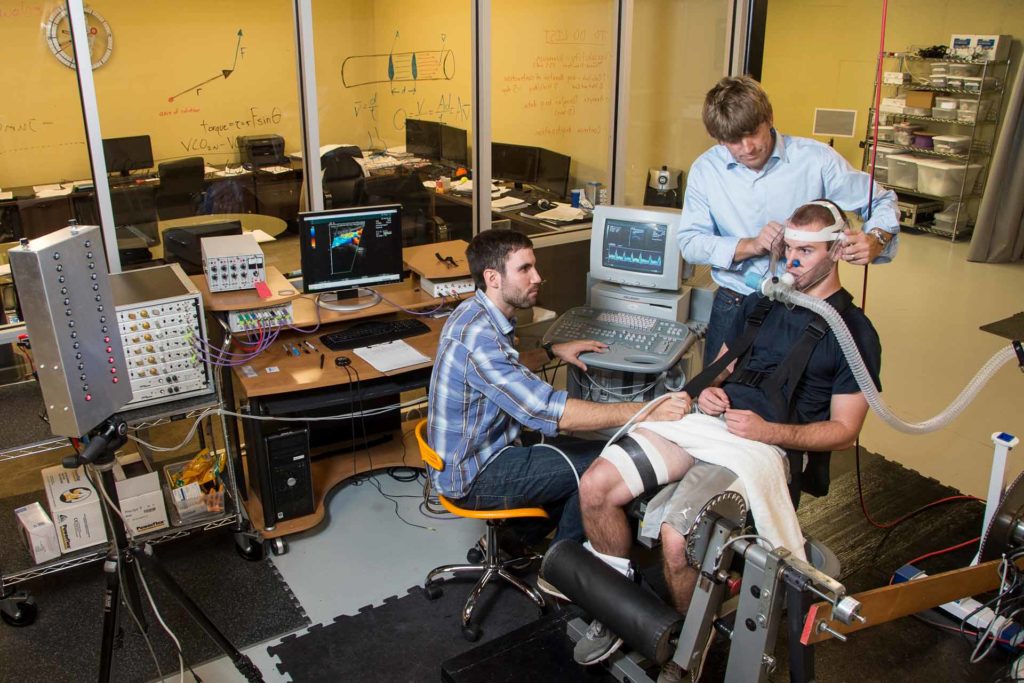Across Montana, scientific research is having a significant impact on the state’s economy. Researchers are studying how traumatic injuries change human brains, the origins of mitochondria and chloroplasts and how they integrate with cells, how to predict trends in the evolution of bird shapes, how to overcome herbicide-resistant weeds, how to breed more profitable wheat varieties, and the list goes on.
The Montana University System (MUS) provides a home for this research. These activities are primarily undertaken at six university locations: Montana State University – Bozeman, the University of Montana – Missoula, Montana Technological University, Montana State University – Billings, Montana State University – Northern and the University of Montana – Western. University research in general provides both direct and indirect economic impacts to the Treasure State.
To find out the economic impact of this research, the Bureau of Business and Economic Research studied what the state economy would look like without these activities. While it may be difficult to objectively or accurately quantify all of the impacts of university research, it was found that MUS research contributes a substantial amount to the state economy.
University Research in Montana
Just how does research impact an economy? Scientific research generally impacts a society in a number of measurable and immeasurable ways. Particularly, research performed in the Montana University System affects the state economy in the following ways:
- MUS research is a focal point for spending in the state by the federal government and other out-of-state sources in support of projects. Without MUS research these monies would not come into the state.
- MUS research attracts talented faculty and students to Montana. Without MUS research many of these individuals would go elsewhere, taking their careers and earning power to other places.
- Research produces knowledge, which translates into economic value. Research supports the development of new products and services that make consumers better off and businesses viable and more productive.
- Research within MUS attracts visitors who attend conferences and other research focused activities. Without research, the spending of these visitors would be lost.
- MUS research has been an incubator for spin-off companies either founded by MUS research personnel or in close connection with research activities. Without this opportunity, these companies would not have been formed and their jobs would not exist.
- The fact that MUS is an important university research system makes Montana a more attractive place for technology-related companies to start or relocate to (even if there are no formal connections). This helps attract skilled workers and makes use of our research facilities and resources.
- Without research, the entire MUS system would be a different kind of institution. Without the knowledge and abilities of research trained personnel in the classroom, the caliber and pay of its faculty would be much lower than it is today.
Research Approach
We built a model that incorporates detailed information on research taking place in six universities across the state. Using this model, we can see what the state economy would look like if these research activities were not undertaken.
To get a full picture of all of the economic interactions between university research and the rest of the economy, we used a model (REMI) that is specifically calibrated for application to the Montana economy. This model allows us to disentangle the direct, indirect and induced impacts of research activity in the state. This is done by comparing two states of the Montana economy: the current state where MUS research is being performed, and an artificial economy without MUS research and its accompanying spending, employment, spin-off companies and intellectual property revenue. The difference between these two scenarios is the calculated economic impact of MUS research in Montana.
MUS Model Inputs
This study used the most recent data of economic activity resulting from research at six universities in Montana. Together these universities spent $233.5 million on research and development activities, along with $1.2 million on research related construction projects. The MUS institutions directly received $712,330 in revenue from intellectual property payments. Visitor spending due to research related activities, such as conferences, was $274,689.
Lastly, employment in spin-off companies due to research transpiring at the MUS research institutions was included in the model. In total, we found that 233 jobs were a direct outcome of MUS research, attributed to 41 spin-off companies.

Research Results
After combining all of these inputs into the model, we can calculate an estimated economic impact. What we find is that research undertaken across the six primary locations of the Montana University System result in a state economy that:
- Has 3,532 more permanent, year-round jobs with average earnings of $66,506 per job.
- Provides households in Montana with $234.9 million more in annual income, including $201.5 million more in after-tax income.
- Produces an additional $565.8 million each year in economic output.
- Contributes $19.4 million more to the state government through tax revenue.
- Maintains a statewide population that is larger by 4,524 people, including 1,027 school-age children.
MUS research has been and continues to be an important driver to the Montana economy. It employs talented, high wage people and engages in activities that bring money and jobs into the state that otherwise would not exist. But as noted, its economic footprint is larger than the operations on the MUS system campuses themselves. The synergies and spin-off businesses that have occurred because of the discoveries and advances of MUS research represent another boost to economic activity that would not have occurred in its absence. Even without capturing the all of the dimensions of its relationship with the economy in this analysis, we find that the economic impact of research performed throughout the Montana University System is quite significant.


